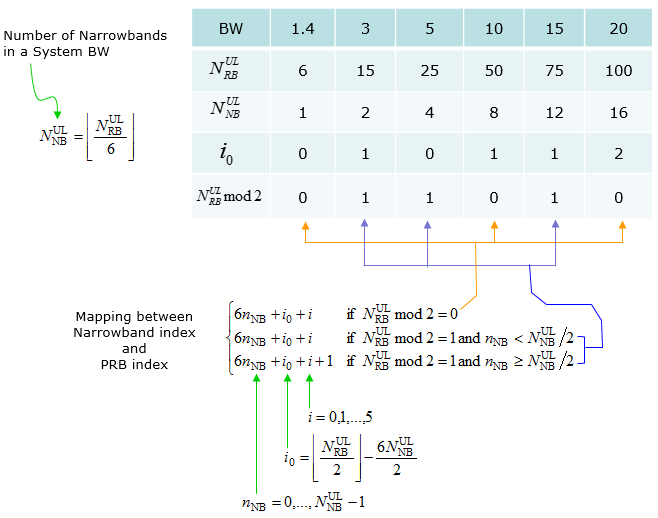|
4G/LTE - BL/CE |
||||||||||||||||||||||||||||||||||||||||||||||||||||||||||||||||||||||||||||||||||||||||||||||||||||||||||||||||||||||||||||||||||||||||||||||||||||||||||||||||||||||||||||||||
|
Narrowband
LTE-M1 System Bandwidth is always 1.4 Mhz, but legacy LTE System BW with which LTE-M1 operate can be wider than 1.4. When LTE-M1 operate in a wider legacy LTE band, it split the wider band into multiples of 1.4 Mhz band slot and use any one of those slots. These 1.4 slot for LTE-M1 is called 'Narrowband'.
How many Narrowbands are there for each System Bandwidth ?
The way in which narrowbands are devided and indexed is specified in 36.211-5.2.4. Based on 36.211-5.2.4, following table can be created.
Mapping between PRB and Narrowband
Based on the formula and table shown above, you can figure out each Narrowband and their index are assigned as shown below. (The PRB marked in grey are the RBs that are not used)
How to figure out which Narrowband to be used ?
How a UE can figure out which Narrowband to be used for transmission or reception ? The answer varies depending on situations. The brief summary of the case and Narrowband determination is as follows. i) PDSCH for SI (SIBs other than SIB1) : si-Narrowband in SIB1 ii) PDSCH for user data : Resource Block assignment field in DCI iii) PUSCH : Resource Block assignment field in DCI
[1] 3GPP TS 36.211 V13.2.0 (2016-06)
|
||||||||||||||||||||||||||||||||||||||||||||||||||||||||||||||||||||||||||||||||||||||||||||||||||||||||||||||||||||||||||||||||||||||||||||||||||||||||||||||||||||||||||||||||
